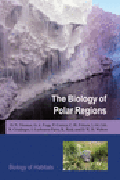
There is now an increased awareness of the importance of polar regions in theEarth system, as well as their vulnerability to anthropogenic derived change,including of course global climate change. This new edition offers a concise but comprehensive introduction to polar ecology and has been thoroughly revised and updated throughout, providing expanded coverage of marine ecosystems andthe impact of humans. It incorporates a detailed comparison of the Arctic andAntarctic systems, with a particular emphasis on the effects of climate change, and describes marine, freshwater, glacial, and terrestrial habitats. This breadth of coverage is unique in the polar biology literature. As with other titles in the Biology of Habitats Series, particular emphasis is placed on the organisms that dominate these extreme environments although pollution, conservation and experimental aspects are also considered. This accessible text is suitable for both senior undergraduate and graduate students taking courses in polar ecology, often as part of a wider marine biology degree programme. It willalso be of value and use to the many professional ecologists and conservationbiologists requiring a concise overview of the topic. INDICE: Preface 1. Introduction to the Polar Regions 2. Stress, Adaptation and Survival in Polar Regions 3. Periglacial and Terrestrial Habitats in Polar Regions 4. Glacial Habitats in Polar Regions 5. Inland Waters in Polar Regions 6. Open Oceans in Polar Regions 7. Frozen Oceans in Polar Regions 8. Marine Benthos in Polar Regions 9. Birds and Mammals in Polar Regions 10. Climate Change in Polar Regions 11. Human Impacts on Polar Regions 12. Some Conclusions Further Reading & Web Resources References Index
- ISBN: 978-0-19-929813-6
- Editorial: Oxford University Press
- Encuadernacion: Rústica
- Páginas: 416
- Fecha Publicación: 02/06/2008
- Nº Volúmenes: 1
- Idioma: Inglés
